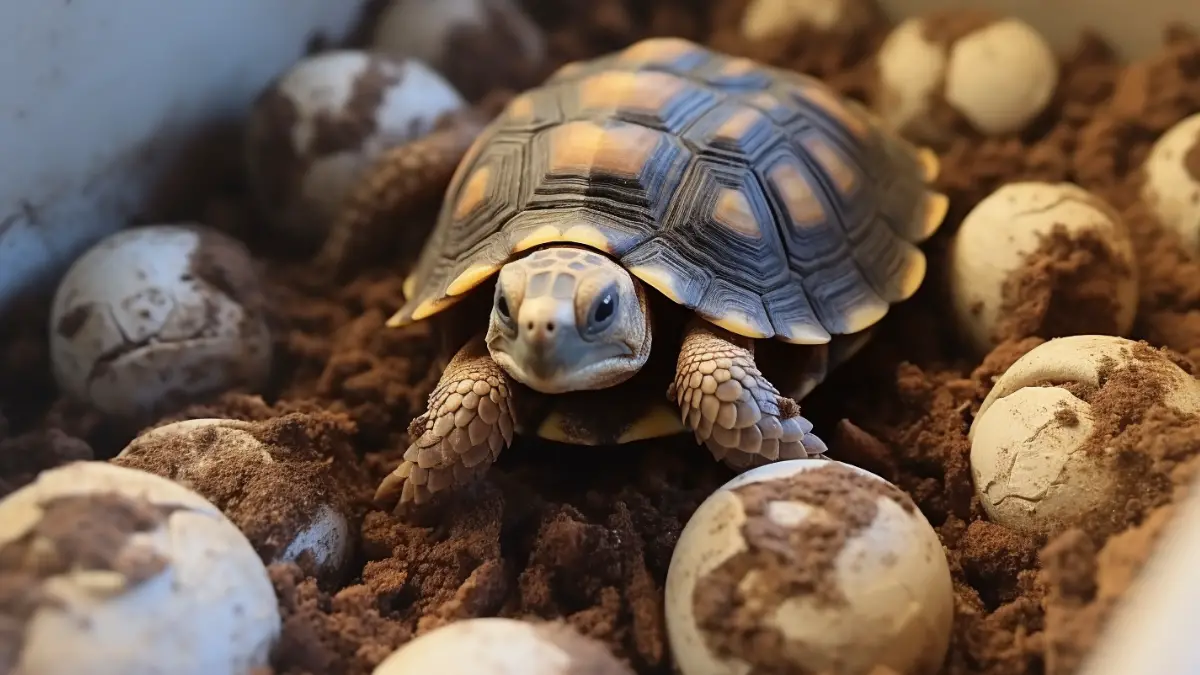How To Hatch Tortoise Eggs At Home: Let’s Figure Out!
Female tortoises lay their eggs about 4-6 weeks after mating in their natural habitat and bury them in the ground to keep them safe from predators. But with the right guidance and ideal conditions, you can hatch tortoise eggs right in the comfort of your home.
So, how to hatch tortoise eggs at home? You can follow these simple steps to do so:
- Try to create an environment that resembles their natural habitat
- Use a plastic container to hold the eggs
- Fill it with moist vermiculite or sphagnum moss
- Maintain a temperature between 85°-90°F
- Maintain the humidity levels and wait for about 70-120 days to hatch
In this article, we will explore the essential steps for successfully hatching tortoise eggs at home. So, let’s start!
How To Hatch Tortoise Eggs At Home Without A Commercial Incubator?
Contents
If you are interested in hatching tortoise eggs at home, it is important to follow the correct guidelines. Below, we have provided you with a detailed guide on how to hatch tortoise eggs at home.
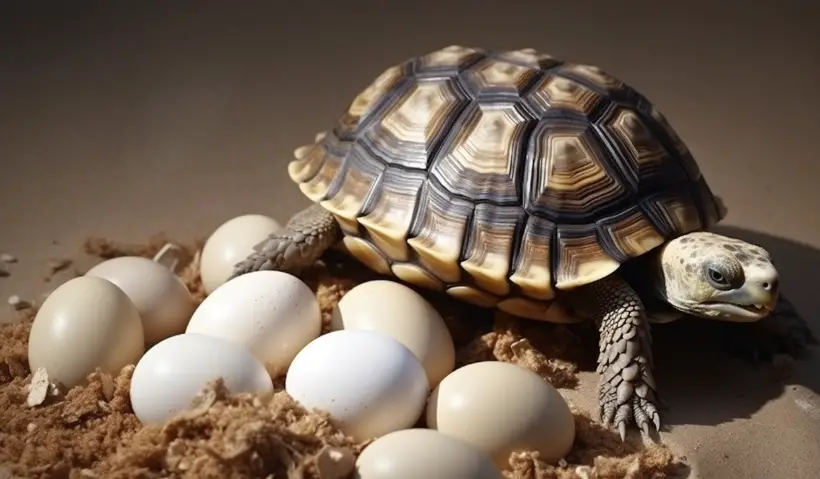
1. Ensure The Eggs Are Fertile And Healthy
If you want your tortoises’ eggs to hatch successfully, it is crucial to minimize the presence of unfertilized and infected eggs. A study suggests that before the incubation process, you should discard eggs with irregular shapes, broken shells, or weighing less than 10g.
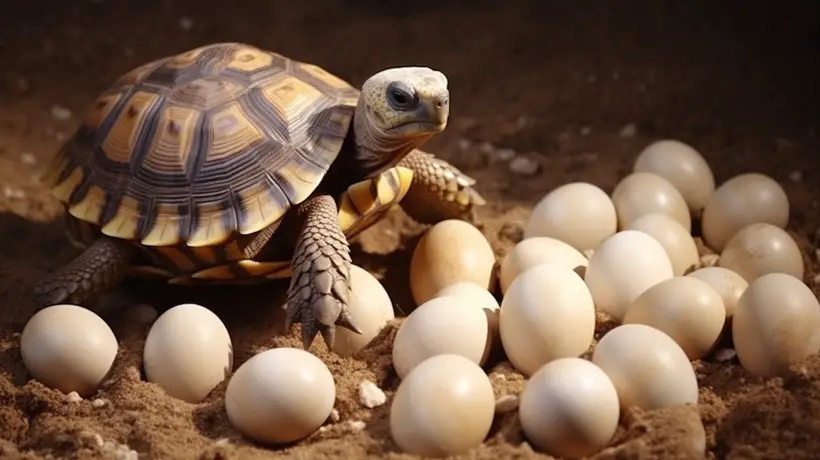
Then, you can follow these tips to help your tortoises lay healthy and fertile eggs:
- Provide a healthy diet rich in fiber, vitamins and minerals.
- As tortoises are ectothermic, you should keep them at a temperature between 65°-80°F.
- Make sure that your tortoises stay hydrated.
- Provide loose earth mounds so the female tortoise can dig their nests.
- Try to avoid mating a male from a larger sub-species with a female from a smaller sub-species.
2. Collect The Eggs
After four to six weeks of mating, the female tortoise will dig a flask-shaped nest using her hind legs. She will then lay an average of 5-10 round-shaped eggs. To protect the eggs from predators, she will cover them with dirt and debris.
You should allow the female tortoise to complete this process before collecting the eggs. Be extra careful not to twist or shake the eggs.
Additionally, you should mark the eggs with a marker to keep track of the collection date and original position.
3. Set Up The Incubation Space
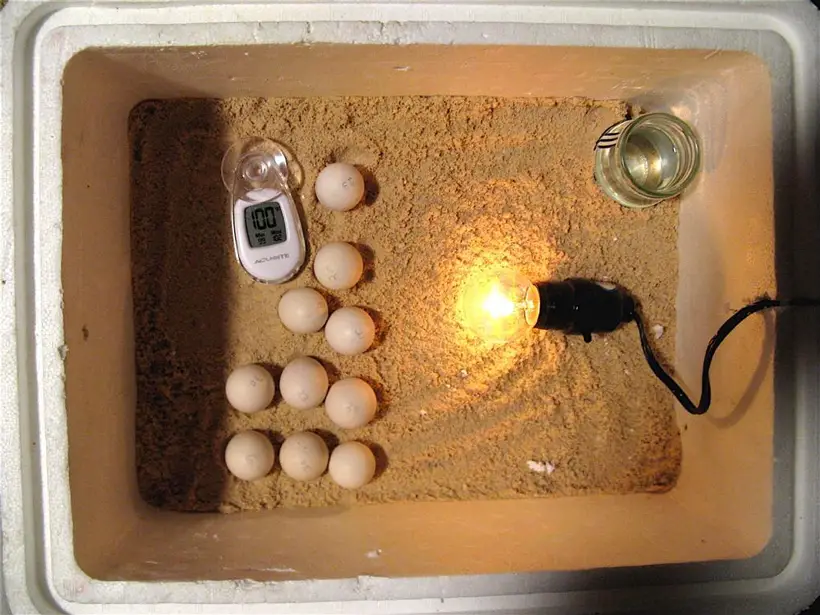
Now, you will need to create the perfect environment for the eggs to hatch. You may use a commercial reptile egg incubator, but it can be quite expensive.
Alternatively, you can use a big deli cup container, glass tank or a plastic box with a well-fitting lid. It is advised to select a container that has a height of 50cm and a width of 30cm.
In the wild, female tortoises choose warm and slightly damp spots to lay their eggs. To replicate these conditions, you should fill the container with a thick layer of suitable substrate, such as
- Plain garden soil
- Coconut husk
- Sphagnum moss
- Vermiculite
- Peat moss
- Cypress mulch and potting mix
4. Place The Eggs In The Prepared Substrate
Take the eggs you have collected and carefully put them into the substrate. Remember to keep some space between each one. In addition, do not bury the eggs too deeply in the substrate. They should be partially exposed to allow for proper gas exchange. Then, close the container’s lid.
5. Maintain The Temperature And Humidity Levels
To produce male tortoises, keep the temperature a bit lower (between 26.0°-30.6°C) during incubation. For female tortoises, maintain a slightly higher temperature (between 32.8°-35.3°C).
To maintain the ideal temperature of 31.8°C during incubation, you can use a UV lamp, a heating pad, or a hanging 60-watt LED bulb. Remember, you only need to turn the light on for three hours during the day and night.

Additionally, it is crucial to maintain a high humidity level of around 70-80% to prevent the eggs from drying out. You can use a hygrometer to measure the humidity levels.
If the humidity level falls below the recommended percentage, spray the substrate with water or use a humidity tray.
6. Maintain The Oxygen Levels
Scientists have noticed that when tortoise eggs hatch in containers without proper ventilation, it raises the death rate of the baby tortoises. Therefore, you should open the container once a day for about 30-50 seconds to allow some fresh air to circulate.
7. Observe Embryo Development
Normally, it takes about 70-120 days for tortoise eggs to hatch. During this time, it is important to keep an eye on the temperature and humidity levels and avoid moving the eggs unnecessarily.
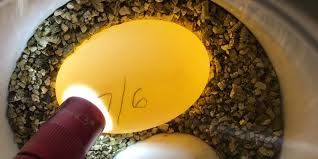
After a few weeks, you can use a bright light to shine through the egg and check for signs of development. This process is called “Candling.” As the egg gets older, the white becomes almost see-through and thin. This enables you to see the veins or the growth of the embryo.
Candling can also help identify unfertilized or dried-out eggs. Take a torch light and shine it through the egg. If you notice an empty space inside the egg, it means the egg is unfertilized. Hence, you should remove that egg from the container.
8. Egg Hatching Period
You might start noticing some changes in the eggs at the end of the incubation period. The shells may become thinner, and you might even see slight movements or hear soft sounds coming from inside.
These are signs that the baby tortoises are getting ready to hatch. They will use their egg tooth to crack open the eggshells. This process can take a few hours to complete.
You can watch this YouTube video for more information.
Common Mistakes You Should Avoid While Trying To Hatch Tortoise Eggs At Home
Here, we have listed below the most common mistakes to avoid while hatching tortoise eggs naturally at home.
- Improperly storing or transporting the eggs
- Failing to remove any unfertilized and infected eggs
- Handling the eggs with sharp tools
- Forgetting to wear gloves when handling the eggs
- Keeping the eggs in an environment that is either too hot or too cold
- Helping the hatchlings to break out of the eggshells
FAQs
Check out the FAQs we have listed below to gain more information on how to hatch tortoise eggs at home.
Turn the eggs gently once or twice to prevent the embryo from sticking to the eggshells. Be careful not to twist them too much as this can harm the developing embryos.
When turtle eggs become infested with mold or worms, it is important to remove them immediately. You should gently wipe the affected area with a wet towel to allow oxygen to circulate and prevent contamination.
Yes. You can. However, to allow proper airflow, ensure that the eggs do not touch each other in the container.
Final Words
In conclusion, if you are planning to hatch turtle eggs at home, it is important to be careful and cautious. Patience is needed throughout the incubation period, which usually lasts two months.
During this time, it is important to carefully monitor the temperature, humidity, and oxygen levels in your homemade incubator. Furthermore, you should seek professional advice from veterinarians and follow the guidelines in this article to successfully hatch tortoise eggs at your home.

